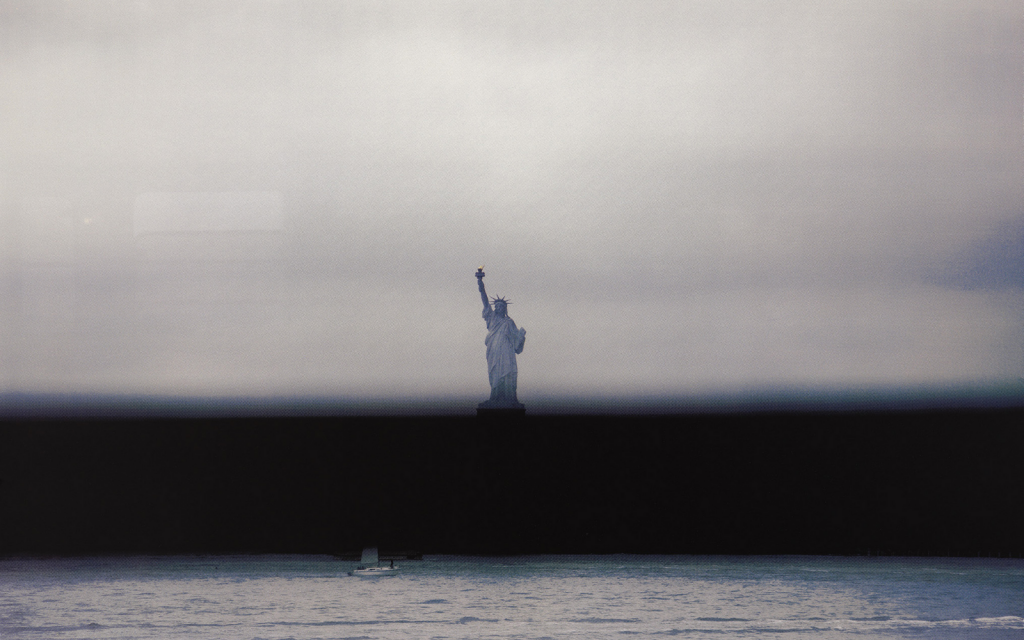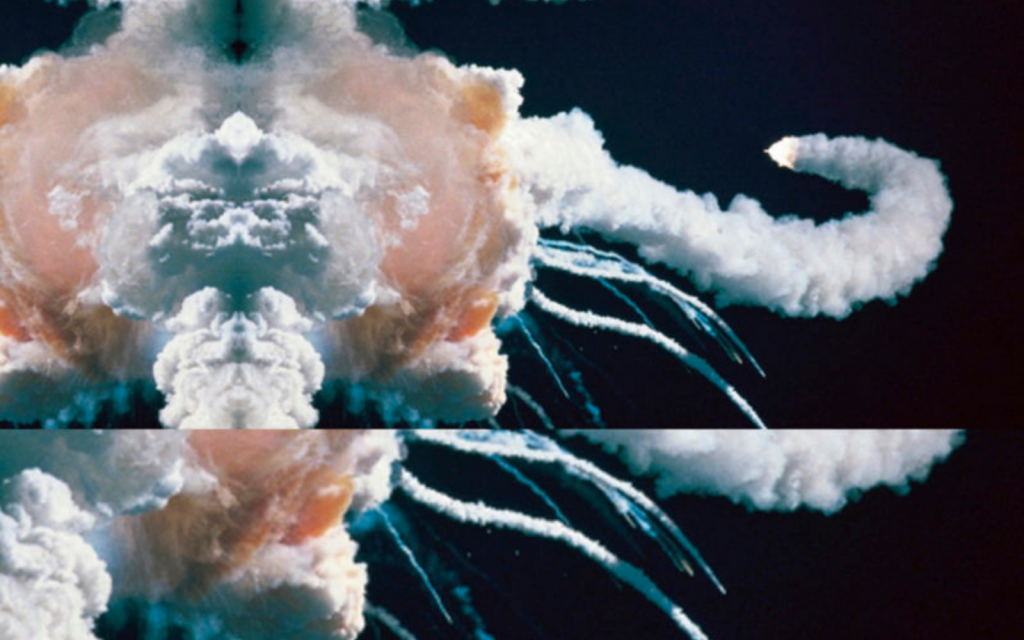The Andy Warhol Museum’s “Fantasy America” Group Exhibition
Works by five contemporary artists form an exhibition on the current state of the States

On now, The Andy Warhol Museum‘s new exhibition Fantasy America celebrates the artist’s immense influence by showcasing thoughtful art pieces by several contemporary New York-based artists: Nona Faustine, Kambui Olujimi, Pacifico Silano, Naama Tsabar and Chloe Wise. Each provided works (mixed media, video, photography, silkscreening, collage and beyond) that reflect on the status of the United States, the nation’s intertwined identity with products and entertainment, and the concept of time and healing—and whether the former ultimately fuels the latter.
“This exhibition really explores the America that these individual artists crafted, based off their fantasy Americas, and reflects on the reality of America. The works have timely essence to them because a lot of people who will see the work can really relate to the works, whether they’re film or painting and photography,” curator José Carlos Diaz tells CH.

Carlos Diaz’s work began four years ago, and references Trump-era television and the constant talk of the former President’s “America First” antics. The works included in the show invoke the heat and tumult of that time, while offering insights from the artists’ own experiences. For example, in Chloe Wise’s “Alternative Facts” (2020) the artist reinterprets Kellyanne Conway’s speeches through a TV that’s washed up on a seemingly deserted beach. She also plays the lone audience member, watching the TV screen as waves wash ashore. Less of a mockery of Conway than it is commentary on political-meets-entertainment television, the video plays on loop in a room covered in carpet. In “Offer Ending Soon” (2015), another video by Wise, models act out steamy ad campaigns while reading the menu of an all-encompassing American chain restaurant, the Cheesecake Factory. Wise’s contributions in particular spotlight Warhol’s influence as a filmmaker and a commentator on consumerism and American identity.
There are other installations that reference Warhol’s serious side, often expressed through his publications. One such release was America, which he published with Harper Row in 1985. The exhibition derives its title from the book’s first few lines.

“Everybody has their own America, and then they have the pieces of a fantasy America that they think is out there but they can’t see,” Warhol writes. “When I was little, I never left Pennsylvania and I used to have fantasies about things that I thought were happening in the Midwest or down South or in Texas that I felt I was missing out on. But you can only live life in one place at a time. And your own life while it’s happening never has any atmosphere until it’s a memory. So the fantasy corners of America seem so atmospheric because you’ve pieced them together from scenes in movies and music and lines from books. And you live in your dream America that you’ve custom-made from art and schmaltz and emotions just as much as you live in your real one.”

Nona Faustine toys with this tension using photography. In her series My Country, she alters her own photos to reflect upon the trauma endured by Black individuals and the calculated exclusion of Black history from public monuments. “Fragment of Evidence” (2019) depicts the Statue of Liberty veiled by the railing on a ferry. Not only a literal obstruction, the railing also forms an abstract block; the impossibility of freedom. With “Oh No The Devil Never Ever Lies” (2020), Faustine is face to face with Trump, through her TV on the day he called for the clearing of protestors from DC’s Lafayette Square, less than seven days after the killing of George Floyd. A haunting, blood-like splatter splits the photo in two.

Carlos Diaz juxtaposes Faustine’s My Country series with Warhol-made wallpaper depicting the National Monument. On the other side, artist Kambui Olujimi’s T-Minus Ø series hangs halfway up a double-height wall. The project comprises 13 flags, each of which references a different failed rocket launch or unsuccessful shuttle attempt. The explosions are printed on cotton and hung from an aluminum pole. While they’re pulled from newspapers and digital photo essays, Olujimi’s presentation pokes fun at America’s incessant need to advertise its successes—often through flags or other ornamentation. Here, he grounds the practice by portraying grim tragedies instead. He also, Carlos Diaz identifies, captures America at its most vulnerable. Coincidentally, Warhol did the same with his original America cover, which sees the Statue of Liberty covered in scaffolding during its restoration period from 1982 to 1986—the same year the of the Challenger disaster, which is also included in Olujimi’s piece.
 Pacifico Silano “Sure of You” (2019) courtesy of the artist / image by Julie K. Herman
Pacifico Silano “Sure of You” (2019) courtesy of the artist / image by Julie K. Herman
These subtle nods to the seminal publication pop up throughout the show. Fantasy America is a group exhibition that includes works by Warhol, but could certainly succeed without them. Each artist’s contributions make statements about the unique experience of life right now, while proving it hasn’t changed that much since Warhol’s time. Pacifico Silano and Naama Tsabar offer commentary on sex and gender, and loss and love in LGBTQ+ communities. Silano turns vintage queer magazines into thoughtful collage art. Tsabar’s sonic compositions step outside gender norms to embrace women and gender non-conforming performers.

Carlos Diaz amplifies these efforts in an adjacent publication also called Fantasy America, which is designed to be both an accompaniment to the exhibition while it’s open and a keepsake once it has closed. While touring the exhibition, we parsed through the new, teal-colored printing Diaz and the artists created, and pondered the show’s collective message.
“These artists are charming, charismatic and extremely gifted, and I think you find that in their work—whether it’s through Naama’s sonic performance, which is very sensual and contemplative, to something that’s very blatantly humorous but critical of country,” Carlos Diaz tells us. “When you look at Chloe Wise’s paintings and films, that content is basically taken from everyday life, from American culture, from our society, from our everyday surroundings, and she represents it and throws it right back at us.”
Images courtesy of The Andy Warhol Museum, hero image: Nona Faustine “In Praise of Famous Men No More” (2019) courtesy of the artist and Two Palms © Nona Faustine












